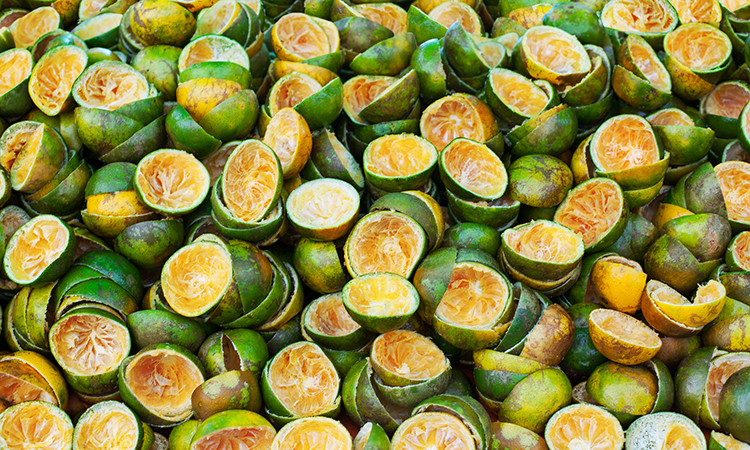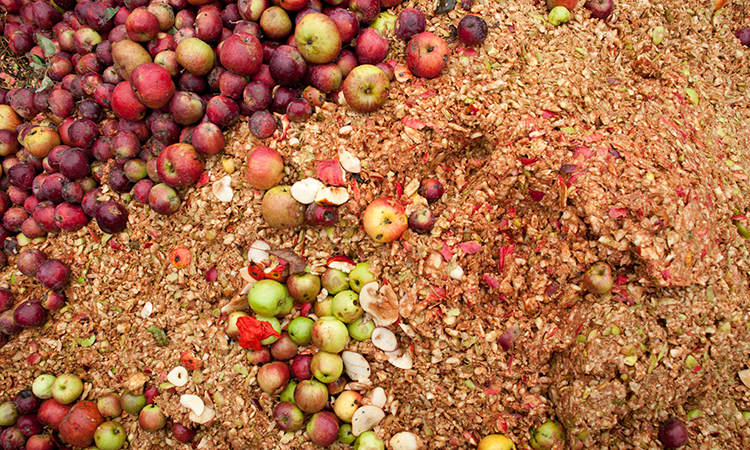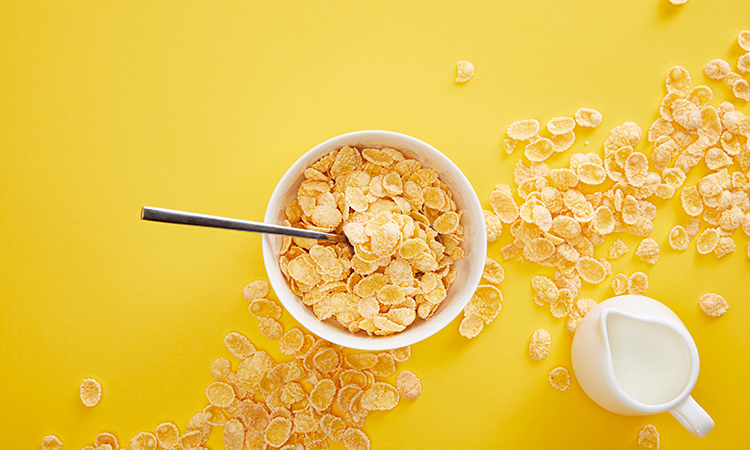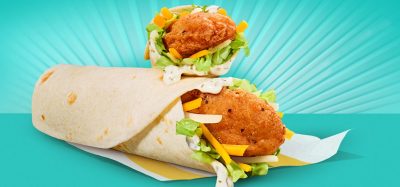Why upcycling could be the key to food waste reduction
- Like
- Digg
- Del
- Tumblr
- VKontakte
- Buffer
- Love This
- Odnoklassniki
- Meneame
- Blogger
- Amazon
- Yahoo Mail
- Gmail
- AOL
- Newsvine
- HackerNews
- Evernote
- MySpace
- Mail.ru
- Viadeo
- Line
- Comments
- Yummly
- SMS
- Viber
- Telegram
- Subscribe
- Skype
- Facebook Messenger
- Kakao
- LiveJournal
- Yammer
- Edgar
- Fintel
- Mix
- Instapaper
- Copy Link
Posted: 2 March 2021 | Dr Caroline Potter | 1 comment
Dr Caroline Potter examines the huge potential for upcycling within the food industry, and offers advice to manufacturers looking to reduce the amount of food they throw away.


There’s been a surge of innovation in food waste upcycling over the past 12 months. Some initiatives focus on the use of by-products to create new foods or functional ingredients. Others look at the conversion of food waste into entirely new commodities. Examples that have hit the headlines range from fibre-rich orange by-product flour1 to plastic-free food packaging based on a natural polymer extracted from langoustine shells.2
With many exciting and innovative concepts emerging, food waste upcycling is poised to be a high-growth area over the next decade. A 2019 report from Future Market Insights3 puts the global market value of products made from food waste at $46.7 billon and forecasts a five percent compound annual growth rate for the next five years. It also suggests that Europe is the fastest growing and most lucrative region for products of this type.
So, what’s the appeal? It’s partly about the valorisation of waste, of course. However, many initiatives using by-products, side stream waste or products that wouldn’t usually make the grade are also presented as ‘sustainable’. This resonates with consumers and investors alike which unlocks exciting opportunities, but also brings responsibilities.
The food waste problem
Food waste reduction is widely recognised as an urgent issue. According to the Food and Agriculture Organization (FAO), a third of food produced globally each year is wasted or lost.4 If this continues unchecked, there’s increasing risk of a global food gap as the world population grows. The World Resources Institute (WRI) identifies reduction of food loss and waste as a top priority in its suggested measures for a sustainable food future.5 Environmental concerns are also paramount. Every aspect of the farm-to-fork journey, from production and processing, to storage and transportation, uses precious resources and results in carbon emissions. If the food is then wasted, those environmental costs have been incurred unnecessarily.
So, it’s good to see the rise of new projects which actively reduce food loss and waste. However, sustainability is not a straightforward concept. There’s always a risk that so-called solutions or circular initiatives could inadvertently create new and bigger problems, or ignore the root cause of the issue.
When sustainability claims are used to accelerate the development and uptake of an upcycled food waste product, due diligence is vital. Consider whether improving the processes that result in waste would in fact be more effective than upcycling. Alternatively, look at ways to differentiate between potentially preventable waste (such as bruised or damaged fruit) versus waste such as citrus peel that was never intended for use. Any sustainability proposition must stand up to scrutiny or at some point a situation may arise that harms brand reputation and impacts sales.
Ensure sustainability claims have substance
New ideas for food waste upcycling often create a buzz of excitement. There’s no need to dampen this energy and enthusiasm, but you do need to take a step back from the application and consider the wider ecosystem around it.
When this happens at an early stage, it drives well-informed decision making. Any limiting factors can be identified before significant time, money and effort have been invested. If the sustainability claims don’t stack up, measures might be taken to resolve this. Alternatively, it may be necessary to explore a different product positioning or even shelve the project. Whatever the outcome, the sooner you can reach this point, the better.
Quantifying the sustainability benefits of a valorised waste stream is a complex undertaking. One way to approach it is through a lifecycle analysis (LCA) study. This looks beyond the immediate waste reduction to calculate factors, such as water usage and carbon footprint, for the upcycled product versus other potential outcomes for the waste in question. There are several tools and approaches that can help with this process. FORKLIFT6 (Food side flow Recovery Life cycle Tool) is a great example. It’s an EU-funded project that applies a partial lifecycle greenhouse gas impact and costing calculation to six key examples of unpreventable food processing wastes.
Specialist knowledge is often required, both to interrogate a product’s sustainability status and to overcome any issues that are identified. Understanding the physical processes and logistics associated with the upcycling activity is key. Similarly, a knowledge of new technologies or business models that might aid the process is invaluable. Limiting consumption of resources or reducing transportation of materials it could tip the sustainability balance in your favour.


Products made from fruit pulp are perhaps more appealing to consumers that those made from animal by-products
Balancing sustainability with commercial viability
While validation of sustainability status is essential, there’s no point developing an upcycled food waste product if consumers aren’t interested, or the raw materials run out.
From the consumer perspective, conducting focus group studies at the front end of the product development process is hugely beneficial. It’s important to ascertain whether target audiences understand the concept of upcycled food waste. When it comes to products for human consumption, plant-based waste streams such as fruit pulp are likely to be received more favourably than animal-derived products such as blood or bone. But a multitude of possibilities exists between these two extremes, some of which will be more palatable to consumers than others.
Ascertaining the unique selling points (USP) is also an important step. The sustainability story alone is unlikely to be enough to sell an upcycled product. Consider additional benefits that might appeal to specific consumer demographics, from general health and wellness to specific functionality. Take the Eggbrane7 product, which recently came to market, as an example; this powder, derived from the membranes of chicken eggs and marketed as a dietary supplement, shows some evidence of benefit for people with joint pain as well as athletes and vegetarians.
Moreover, take care to establish a realistic price-point for the product. When it comes to functionality claims, backing these up with scientific evidence will be essential.
Regarding the supply chain, the origin and availability of the central waste stream has a major impact on the business model and cost to manufacture. Is it produced internally or sourced externally? Are large volumes produced in a few locations, or is it generated at low volumes across many sites? The latter could both increase costs and exacerbate the negative environmental aspects of production.
An initiative in Australia led by glycoscience researcher, Vincent Bulone,8 is looking at ways to extract useful molecules from locally sourced agricultural waste. Certain pigments and compounds derived from fruit and vegetables can be used in place of ingredients that are traditionally imported for pharmaceutical, skincare and health supplement products. The high value of these end products makes the investment in new extraction processes more economically viable.
Technical procedures involved in upcycling need consideration too. Does it entail a simple drying process or a more sophisticated multistep extraction? How much processing is needed, and can it be handled internally?


An ever-present breakfast companion, cornflakes have now been used to brew beer
Collaboration and partnership
It’s not easy to strike an effective balance between sustainability, consumer acceptance and economic viability, but a partnership approach can really help. This might happen in various ways, from raw materials sourcing and technology link-ups, to joint brand initiatives and investment. Partnerships broaden the scope of knowledge, skills and technical capabilities behind the project. They can facilitate access to specialist technologies or amenities required for physical aspects of the waste stream conversion. They can also enhance commercial value, for example by leveraging extended product ecosystems.
A high profile example of brands working together to upcycle food waste is the initiative fostered by Kellogg’s and Seven Bro7hers brewing Co.9
The two organisations teamed up to create limited edition beers using ‘less than perfect’ cereals that did not meet Kellogg’s strict quality control measures. Judging by the reviews on Seven Bro7hers’ website, customer reception was positive, in terms of the beer itself and the fact that it was upcycled.
This collaboration illustrates the potential for different sub-sectors to jointly tackle the food waste problem, with positive outcomes.
Technology partnerships are another potential route to success. The model adopted by upcycled ingredient specialist Renewal Mill10 is a case in point. Its equipment is placed in the facilities of plant-based milk companies where it harvests by-products such as okara (soybean pulp). These leftover solids are dried and milled without using any synthetic processing techniques or unnatural fortification. The end-product is a nutritious gluten-free flour suitable for cooking and baking.
Renewal Mill also processes oat and almond pulp, and has successfully experimented with carrot and vanilla bean pulp. Its goal is to craft the ‘upcycled ingredient platform of tomorrow’, applying its proven process to the many billion tonnes of food by-products generated each year.
Final thoughts
Food and beverage organisations are facing pressure to reduce food waste, consumer appetite for upcycled food waste products is growing, and investor interest is high. As these three factors converge, the opportunities for innovation are immense.
However, sustainability is a broad and complex field, and there is a fine balance to strike. Organisations that take the time and effort to understand the bigger picture have most to gain. Strategic partnerships between manufacturers and technical specialists or established players and niche start-ups are likely to deliver strong outcomes. Drawing on a wide frame of reference is critical when it comes to creating high-integrity, economically viable products in this specialist space.
Ultimately, food waste upcycling has a significant role to play alongside other strategies as the industry works to secure a sustainable food future.
References
- From Orange Juice By-Product in the Food Industry to a Functional Ingredient: Application in the Circular Economy, L. A. de Castro et al, Foods2020, 9, 593 https://www.mdpi.com/2304-8158/9/5/593
- Plastic-free food wrap project wins HIE funding, Fish Farming Expert 2019
- https://www.fishfarmingexpert.com/article/plastic-free-food-wrap-project-wins-hie-funding-package/
- https://www.futuremarketinsights.com/reports/products-from-food-waste-market
- The Food and Agriculture Organization of the United Nations: http://www.fao.org/food-loss-and-food-waste/en/
- How to sustainably feed 10 billion people by 2050, in 21 charts, World Resources Institute https://www.wri.org/blog/2018/12/how-sustainably-feed-10-billion-people-2050-21-charts
- FORKLIFT: assessing climate impacts and costs of using food side streams https://eu-refresh.org/forklift
- Eggbrane https://www.eggbrane.com/
- Turning Agricultural Waste into Multi-Million-Dollar Industries in Australia, The HQ Association Magazine 2020 http://www.meetingmediagroup.com/article/turning-agricultural-waste-into-multi-million-dollar-industries-in-australia
- Kellogg’s launches new beers made from Rice Krispies and Coco Pops waste, The Independent 2019 https://www.independent.co.uk/life-style/food-and-drink/kelloggs-new-beers-waste-rice-krispies-coco-pops-a8956831.html
- The Renewal Mill process https://www.renewalmill.com/pages/our-process
About the author
Dr Caroline Potter is VP Sustainability at Oakland Innovation. She has 15 years’ experience working with global brands and holds a degree and PhD in chemistry. She helps clients identify solutions and navigate the competing pressures and considerations that assessing sustainable solutions entails.
Related topics
Beverages, Environment, Food Safety, Ingredients, New product development (NPD), Packaging & Labelling, Product Development, retail, Supply chain, Sustainability
Related organisations
Food and Agricultural Organization of the United Nations (FAO), Kellogg's, Oakland Innovation, Renewal Mill, Seven Bro7hers, World Resource Institute (WRI)










You’re absolutely right—food waste upcycling is a game-changer, but it’s not a silver bullet. The pressure on food and beverage companies to cut waste is mounting, but the real magic happens when businesses take a thoughtful, big-picture approach. Collaboration is key—bringing together industry giants, niche start-ups, and technical experts can lead to innovative, practical solutions that are both sustainable and financially viable.
Consumers are already showing enthusiasm for upcycled products, and investors are paying attention, which means there’s real momentum. But for lasting impact, companies need to ensure their efforts fit within a broader sustainability strategy. It’s not just about reducing waste—it’s about rethinking how we use resources, create value, and move towards a truly circular food system.